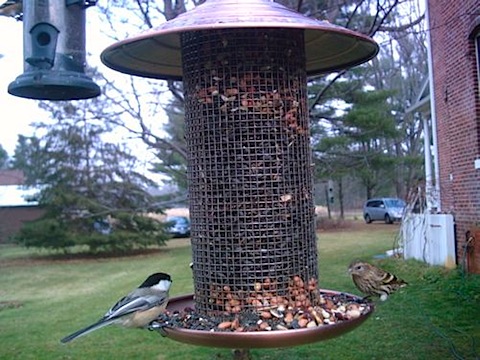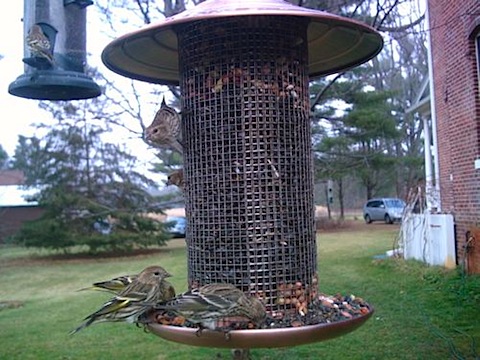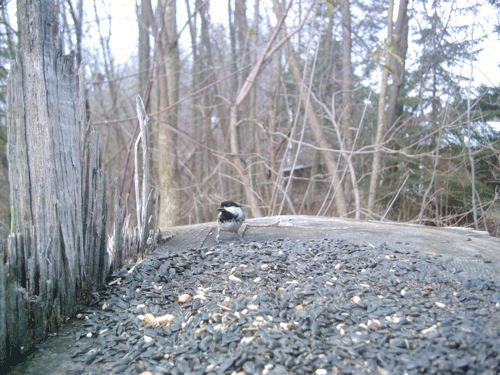Recently, Dennis Donath who I volunteer with at Carpenter Nature Center sent out an email announcement to bunch of us that a local large scale retailer was going to have one heck of a deal on bird seed, specifically black oil sunflower. It was one of those Black Friday deals of black oil sunflower seed going for $9.89 for a fifty pound bag.

That is an exceptionally good deal on sunflower. Birds like the goldfinch and house finch above love sunflower. If you are only going to offer one seed at your feeder--that's the seed to offer. More birds eat that seed than another.
I responded to the group email that based on my experience working at a bird store that a retailer known as a "big box store" had deals on seed that were below dealer cost, it was a sure sign the seed was old. Many wild bird specialty stores insist on fresh product. When it comes to black oil sunflower, the specialty stores usually purchase seed from the most recent crop, it's rarely more than a year old. Once the new crop comes in, the seed distributor must find someone else to purchase it and it's generally sold to big box stores, grocery stores, hardware stores etc at a greatly reduced price.
Unlike Nyjer thistle which tends to only attract birds if it's less than six months old, sunflowers will still be eaten by birds if it's over a year old. After the first year, the nut meat begins to shrivel, so it's not going to be as desirable to wild birds, but if you're the only game in town, they'll go for it. Also, all stores and seed distributors have a problem with insects. The most common ones are the Indian meal moth and the dust weevil. You can only do so much safe pesticide treatment around the bird seed. The bugs are no big deal to birds--it's added protein in the feeder. But those insects are a pest to humans if they find their way into the home. Also, over time, an untreated infestation of the seed can affect the quality of the food as different insects tunnel through shells and eat the seed.

Check it out, even downy woodpeckers go for sunflower seeds. I warned the group in the email that there was probably a good reason the seed was so cheap and recommended they avoid buying it. Dennis brought up the point that it may be great seed from a bumper crop or this could be a loss leader situation--the store gets you inside for insanely cheap sunflower seed and then you end up purchasing several other items in the store. This wasn't out of the question, CUB Foods had an insane turkey sale going on the weeks before Thanksgiving. They were selling turkeys below cost for .37 a pound in the hopes you would come in and buy all your other holiday accoutrements at regular price.
I suspected that this would not be the case--sunflower prices have steadily increased in the last five years because 1. Frito Lay switched to using sunflower oil for their chips leaving less sunflower available to be used as bird seed and 2. fewer farmers have been growing sunflowers because of the ethanol boom and all the subsidies available for corn (which crashed) also leading to fewer sunflowers available for bird seed.

And it gets even more expensive when you see birds eating sunflowers out of the shell like this photo above of a black-capped chicadee. These are great because they do not germinate or leave a hulled shell mess on the ground, but sunflowers out of the shell can be twice the price of regular in the shell black oil sunflowers.
I was surprised and delighted to see a follow up email from Dennis regarding the validity of my claims. Before he retired, he worked for the USDA Seed Research Laboratory in Madison, WI and put his skills to use in testing the advertised seed and if my warning was warranted.
He purchased some of the advertised sale sunflower seed against some old sunflower seed he had on hand. He measured a given volume of both seeds and compared weights. He repeated the test three times and discovered that the sale price seed weighed 12.8% less than even the old seed he had on hand. I would guess this seed is over two years old, but I do not know that for sure.

He then did a visual examination of both seeds. He wrote, "I noticed that the sale price seeds were generally a little smaller. I also observed about 1% of the sale price seeds had tiny holes drilled in them (pictured above), indicating insect damage. I did not observe any evidence of live insect infestation, frass or webbing. My guess is that the infestation occurred in the field, not in storage." I did not find any damaged seeds in my samples of old seeds."

Finally, he broke open several of the "drilled" seed and found the nut meats were damaged. He estimated that 30 - 40% of the kernel weight had been consumed before whatever insect larvae left the shell. Above is a photo of two seeds. The upper is a damaged kernel from the sale seed, the lower is a whole kernel from old seed.
He summed up his research that the seed on sale was no bargain! Thank you Dennis for taking the time to do the actual research! It's cool to know that I have friends with handy skills!
So, beware when you see sunflower or any bird seed on sale at an unusually good price. Chances are it's a sign that the seed is old or of little feeding value to the birds. Again, if you are the only person for miles feeding birds, they will take what they can get. But if you are in a neighborhood and several people feed birds and you feeder is ignored, find out where your neighbor who has birds gets their seed, chances are good that it's fresher.






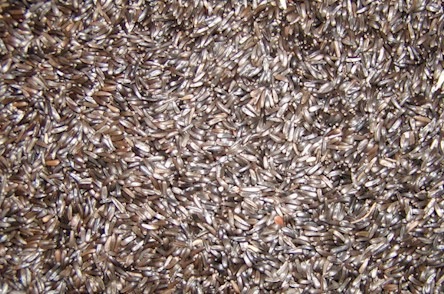
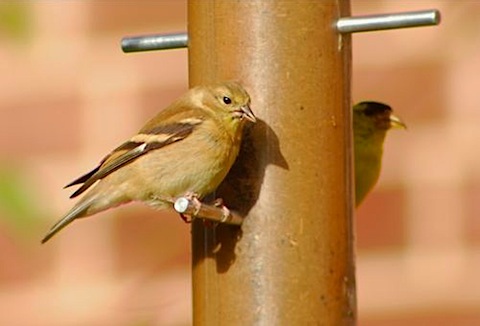
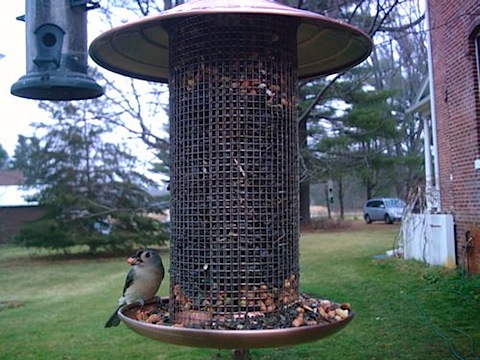 We had the Wingscapes Cam up at Mr. Neil's this weekend and I'm fairly certain I witnessed the arrival of pine siskins. I was out and about on Wednesday and I didn't see any. Just the usual suspects like the above tufted titmouse were using the feeders on Wednesday.
We had the Wingscapes Cam up at Mr. Neil's this weekend and I'm fairly certain I witnessed the arrival of pine siskins. I was out and about on Wednesday and I didn't see any. Just the usual suspects like the above tufted titmouse were using the feeders on Wednesday.